THE SEED COLLECTION
exploring generative art & jewellery
by HarryWXYZ
about Seed
The Seed collection is an exploration of algorithmic and generative design in the context of jewellery. This journey began from my regular practice of using 3D design software, which prompted me to question my relationship with technology and my role as a designer. Instead of merely enhancing efficiency, I sought to redefine my role, positioning myself as a system designer, building frameworks for the computer to generate unique jewellery pieces that I may not have been able to conceive of on my own. The goal was to see how far I could separate myself from the traditional design process a jewellery designer would take.Through Seed, I aimed to leverage new technologies, traditionally associated with production efficiency, as creative tools to push the boundaries of jewellery design. This collection embodies my commitment to expanding and influencing my creativity by interacting with these technologies, resulting in pieces that are artistically significant and conceptually rich.
design process
Each style in the Seed collection begins with thorough research on traditional forms and structures, followed by hand sketching the overall shape and mechanics. In the digital space, I use Grasshopper and Rhino to create a base version of the piece and determine the variables to be manipulated by the seed number. Initial test prints in plastic or mockups in brass ensure the piece is functional and wearable. One of the initial challenges was my limited coding experience, which made the system design for the first piece, Necklace No. 84928243, particularly demanding. Learning how to debug my programs and manage data was crucial, but the process ultimately enriched my creative practice.The core of the artistic process lies in these systems I designed, where the seed number controls every aspect of the jewel. Each digit manipulates various parameters to modify the pieces, determining each element’s shape, size, materials, orientation, and more. This approach allows for the generation of millions of unique variations for each style of jewel. By relinquishing control to the algorithm, I explore the boundaries of my creativity, pushing beyond traditional design choices and embracing a new role as a system designer. This process not only generates visually striking pieces but also challenges the conventions of jewellery design, highlighting the artistic potential of modern technologies.
material choices
The materials that the pieces in the Seed collection are made of are sterling silver, both oxidized and unoxidized, alongside 14k yellow gold. The gemstones used include champagne diamonds, demantoid garnets, yellow tourmalines, green tourmalines, yellow sapphires, green Australian sapphires, and yellow chrysoberyl. Despite the innovative processes and concepts behind this collection, I maintain an affinity for traditional jewellery materials. These materials, known for their durability and wearability, have been used for millennia. By incorporating them into my contemporary project, I bridge ancient jewellery-making traditions with my ultra-modern process.The choice of gemstones was deliberate, creating a cohesive aesthetic with a narrow color spectrum of browns, yellows, and greens. This selection allows the seed number to determine the specific gemstones for each piece, ensuring both uniqueness and harmony. Future iterations of this project may include different color palettes or a wider selection of stones, expanding the creative possibilities. The familiar materials give the pieces a traditional aesthetic at first glance. However, upon closer inspection, the modern forms and details reveal the underlying concept and innovation, challenging traditional notions of what jewellery can be by blending the familiar with the unexpected.
fabrication process
The Seed fabrication process begins by 3D printing the elements in a castable resin, which are then cast in their corresponding metal using the traditional lost wax casting process. Any articulations, clasps, and chains are hand-fabricated, followed by the assembly of the pieces and stone setting if needed. The final step involves tumbling the pieces with a medium grit abrasive media to give them a satin finish that accentuates the layer lines left by the 3D printer.The pieces are designed to be 3D printed without the need for supports, held to the print bed only by the casting sprue. This avoids the need to clean support touch points, preserving the layer lines as a feature rather than a flaw. These lines, created as the printer builds the elements one 0.03mm layer at a time, leave organic patterns reminiscent of topographical maps, while highlighting the digital origins of the pieces.Through extensive testing, I developed a process that ensures high-quality results. This includes a custom casting sprue that allows me to print without supports and have confidence I will get clean castings that won’t need filing or sanding. Meticulous attention to technique during assembly means I can assemble the pieces without leaving excess solder or needing intensive cleaning. The fewer touches from my hands, the more the integrity of the digital design is maintained.
Made Pieces
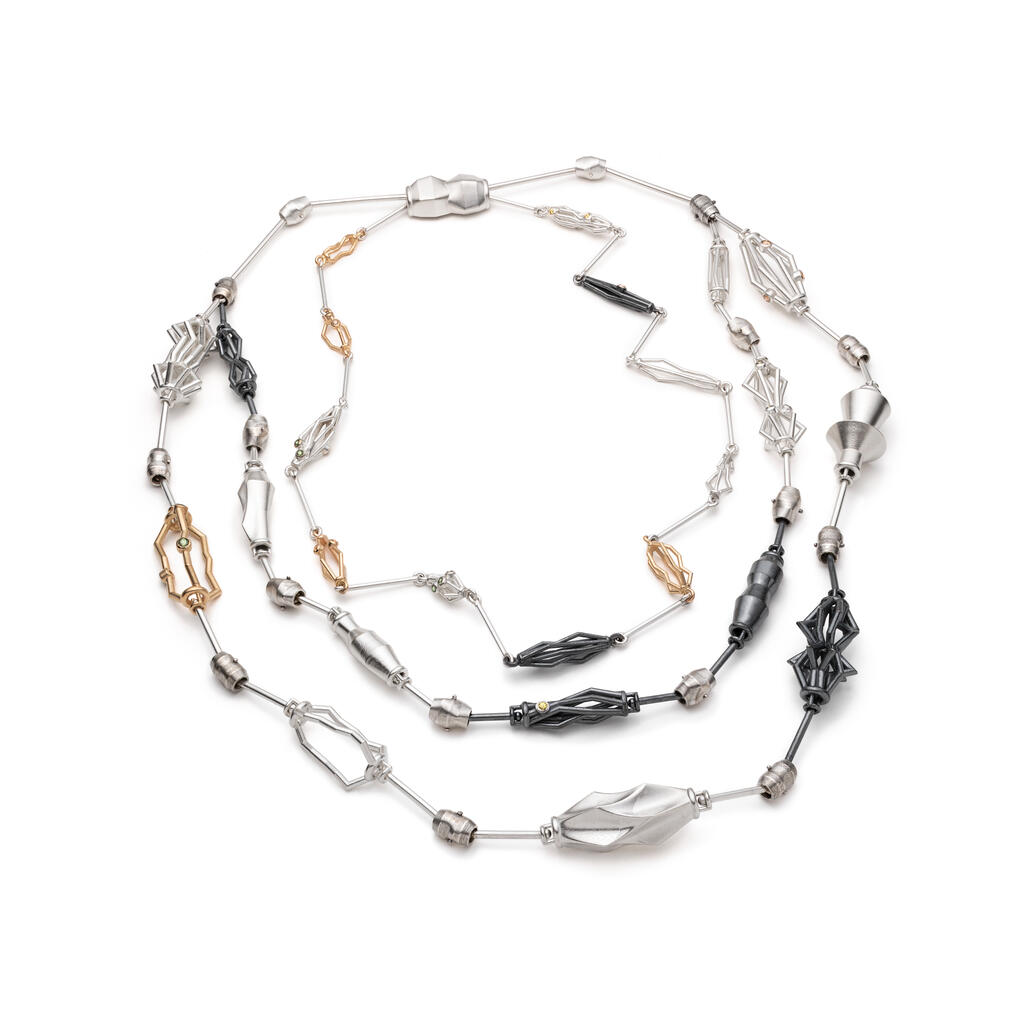
Neckalce No.84928243 - sterling silver, 14k gold, diamonds, sapphires, tourmalines, garnets
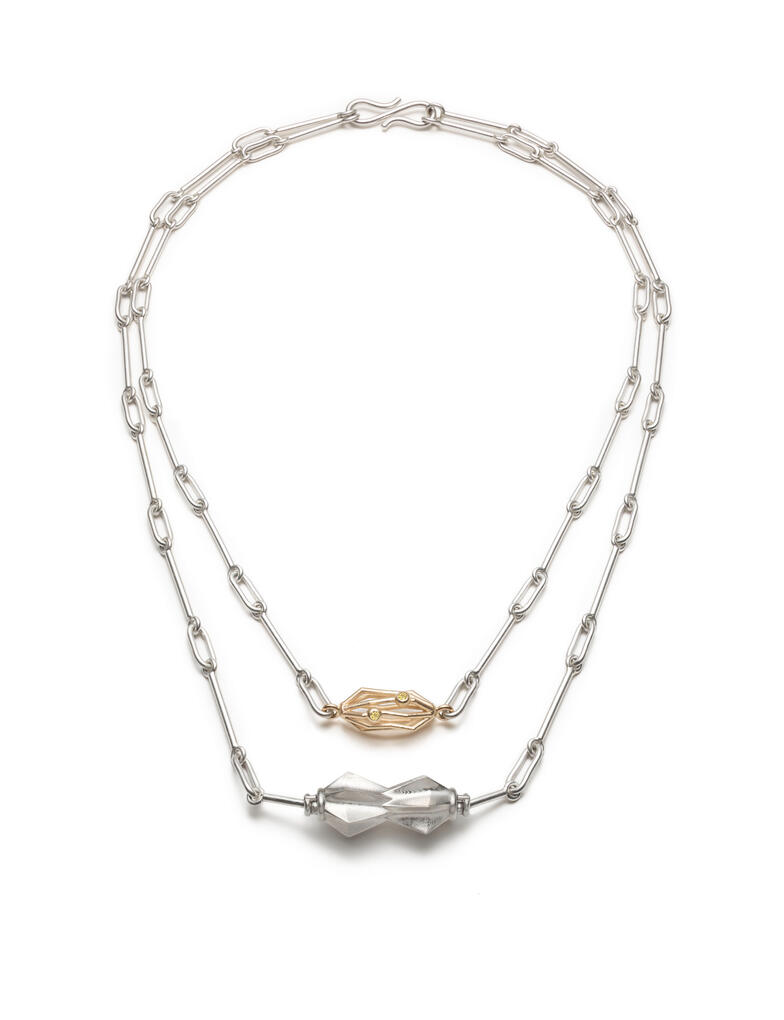
Necklace No. 55432890 (v1.1) - sterling silver, 14k gold, sapphires
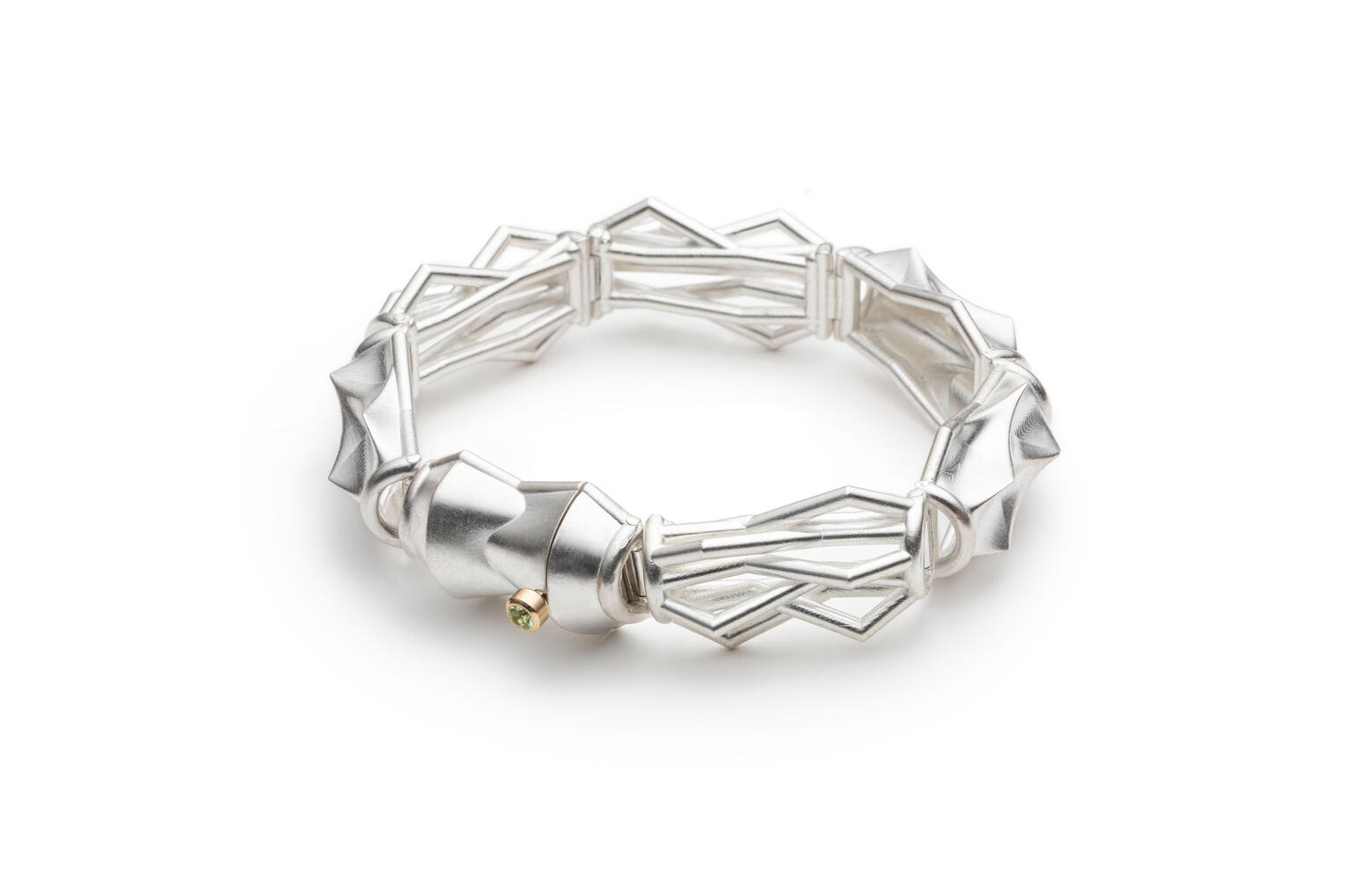
Bracelet No. 1456811 - sterling silver, 14k gold, chrysoberyl
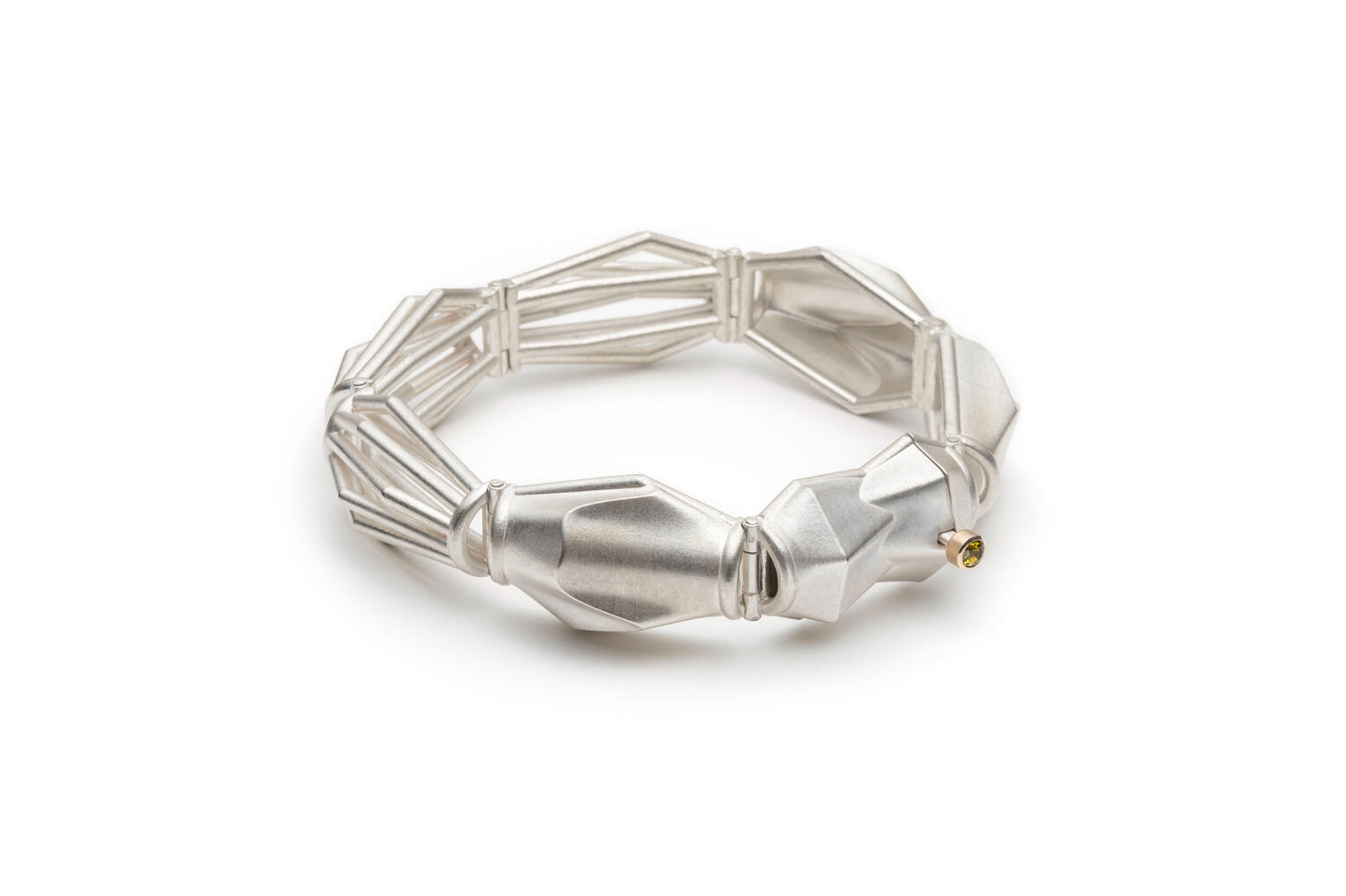
Bracelet No. 04269372 - sterling silver, 14k gold, tourmaline
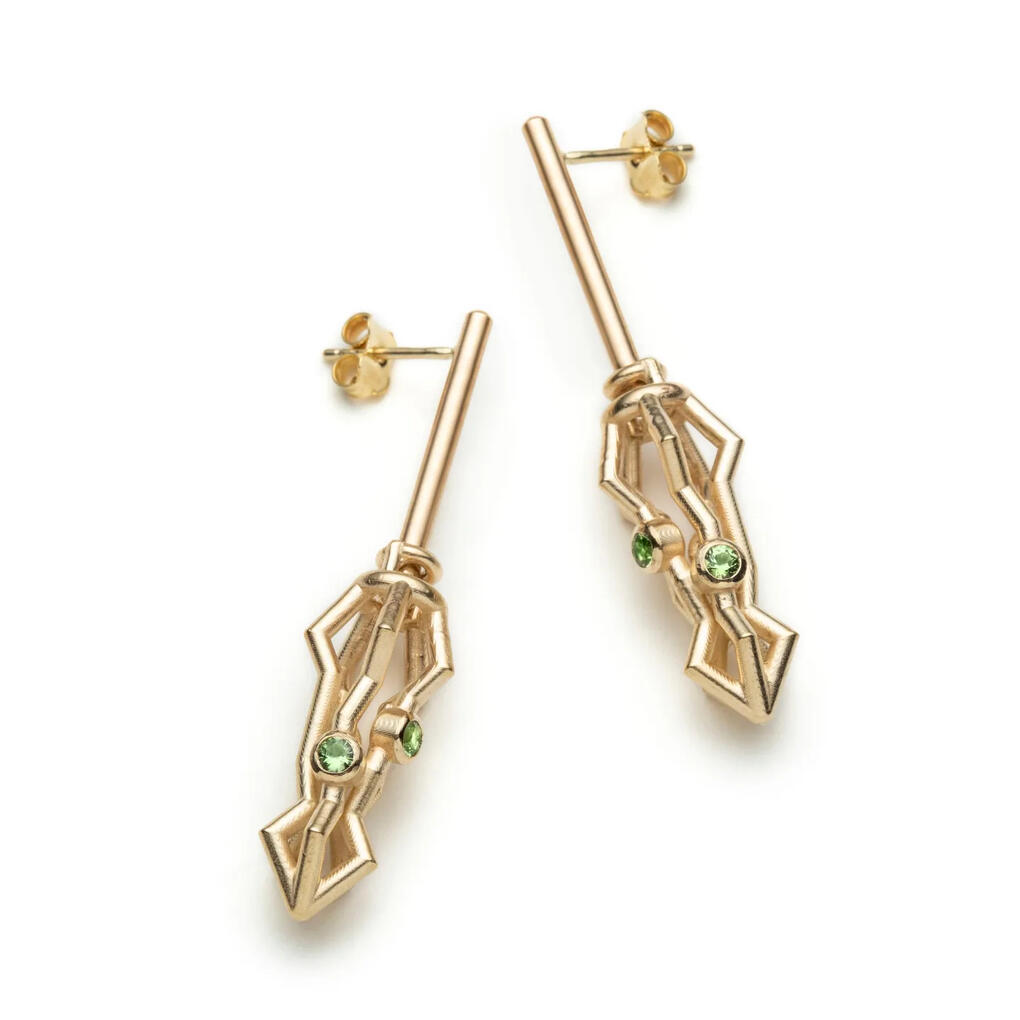
Earrings No. 58589336 - 14k gold, sapphires (sold)
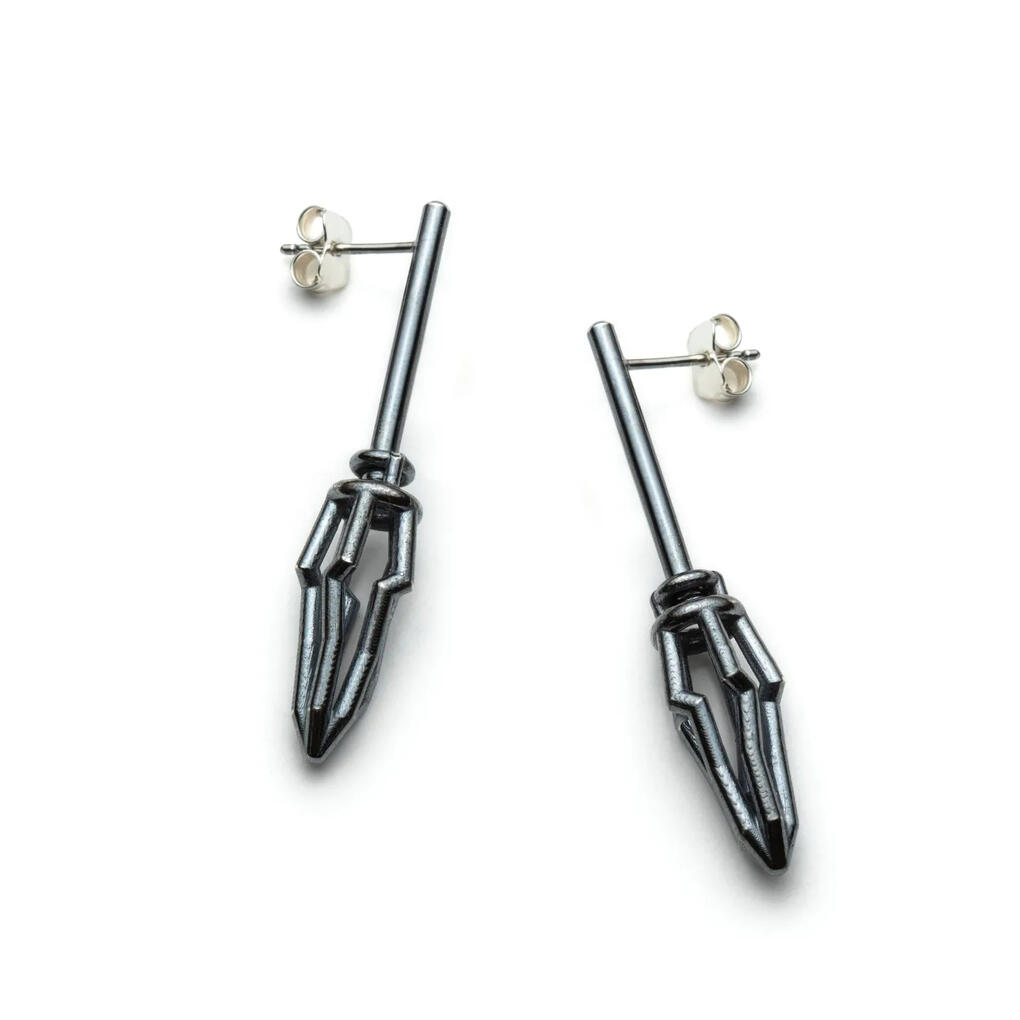
Earrings No. 22459228 - sterling silver
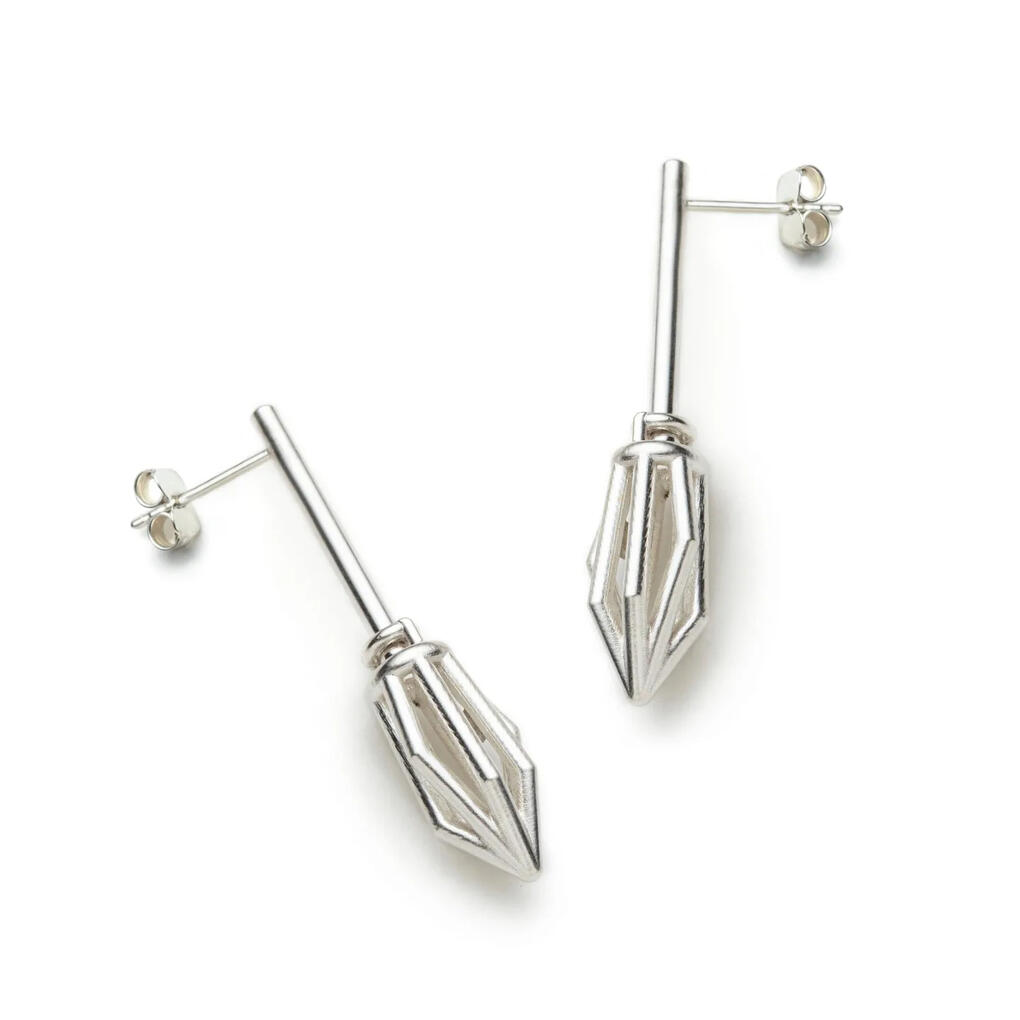
Earrings No. 10083052 - sterling silver (sold)
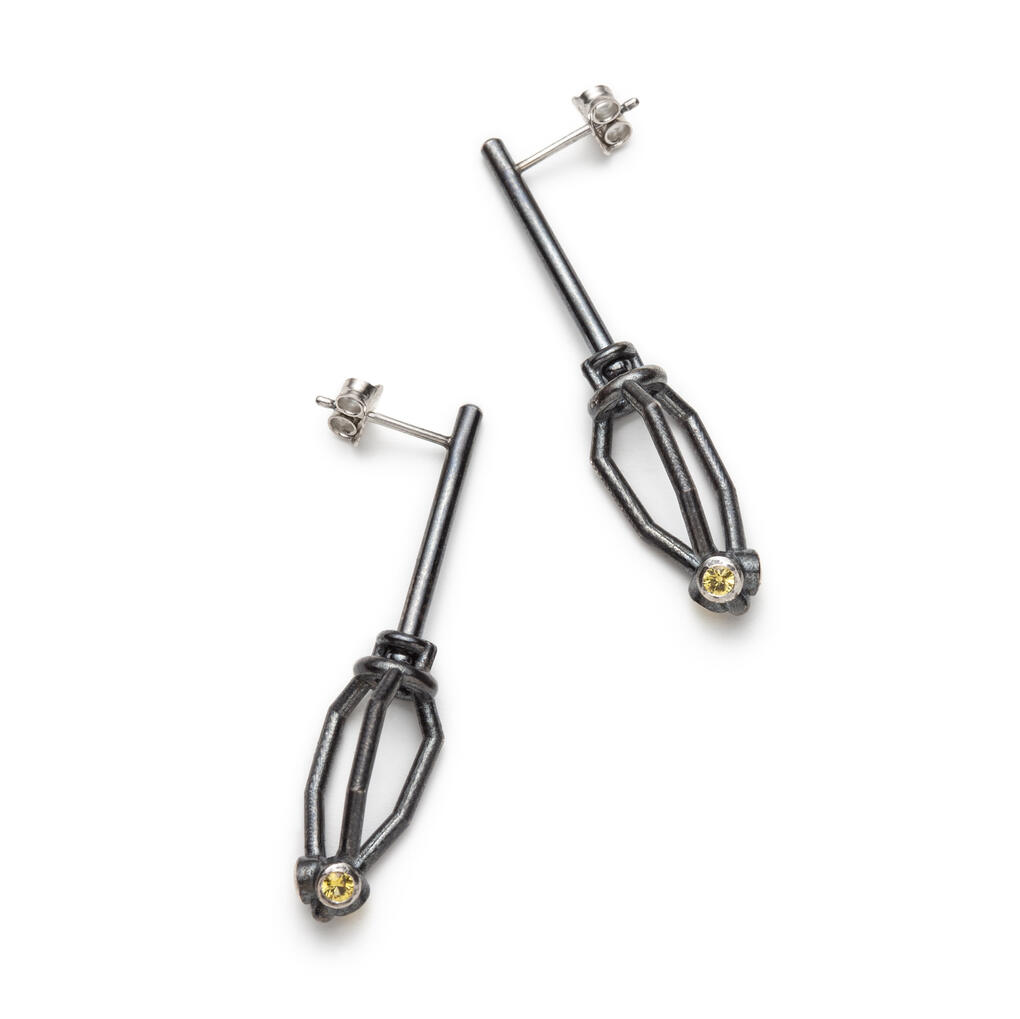
Earrings No. 28272908 - sterling silver, sapphires
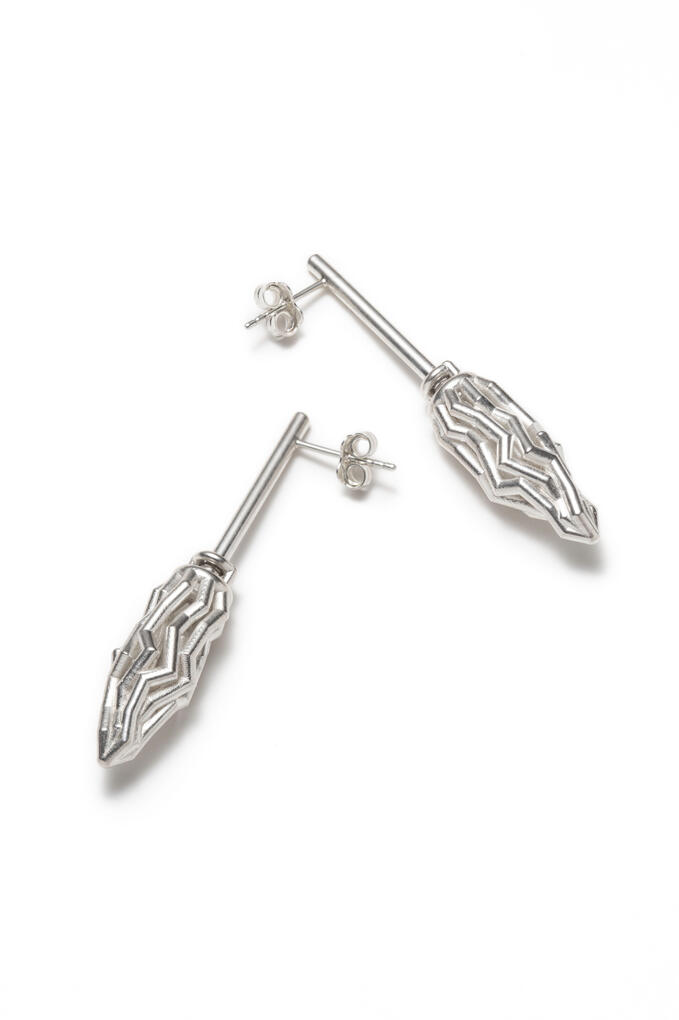
Earrings No. 46712370 - sterling silver
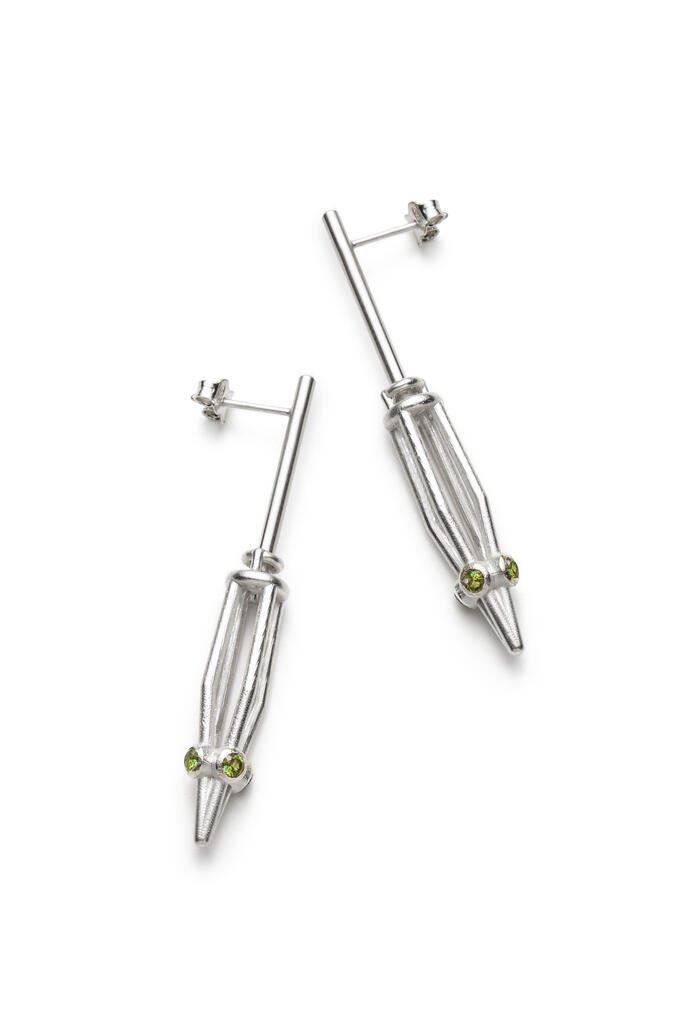
Earrings No. 86079515 - sterling silver, tourmalines
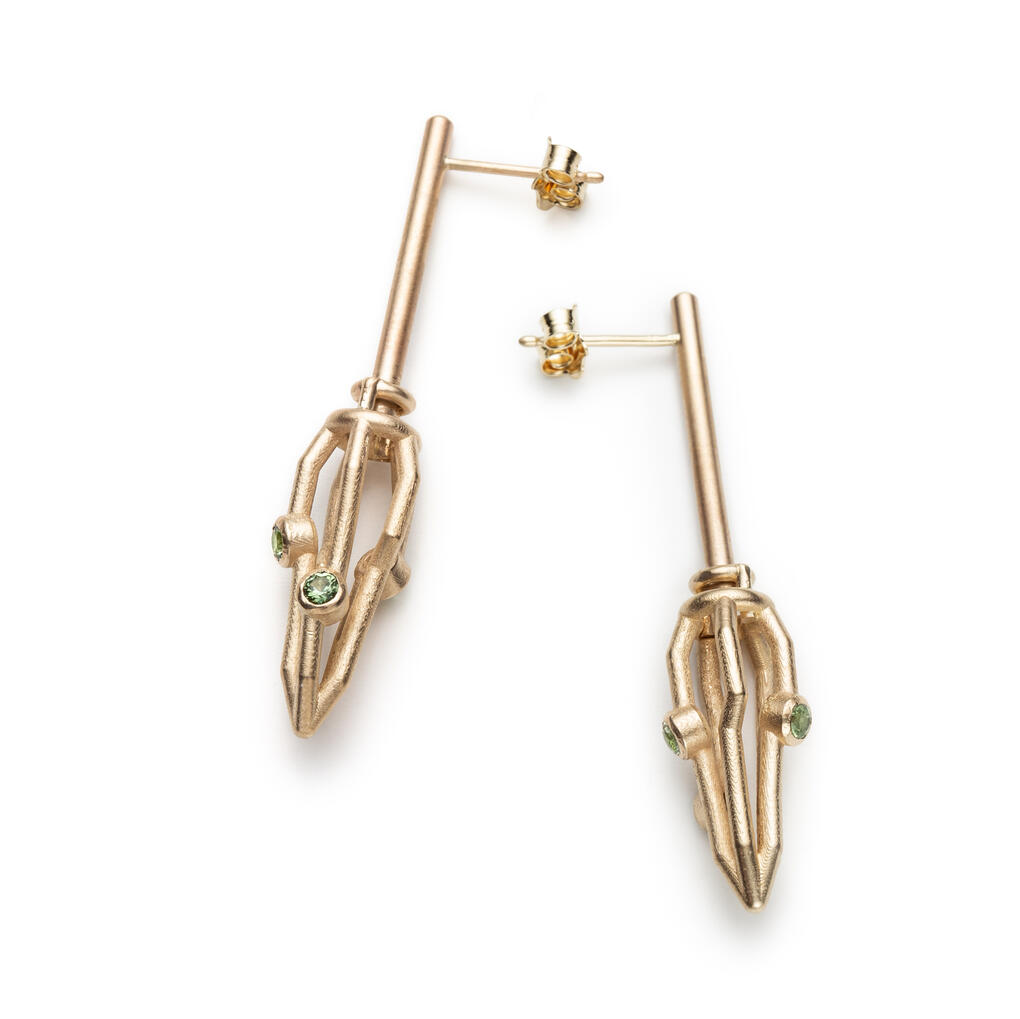
Earrings No. 43555925 - 14k gold, sapphires

Earrings No. 04269372 - sterling silver
future of Seed
The future of the Seed collection envisions an ongoing dialogue between traditional jewellery forms and cutting-edge technology. I aim to expand the collection with new designs, such as rings, brooches, and pendants, while maintaining the cohesive aesthetic that defines Seed. By continuously researching and adapting traditional styles, I seek to create pieces that surprise and challenge conventional notions of jewellery.The exploration of new technologies, such as advanced 3D printing and innovative resins, will further push the boundaries of what is possible, allowing for even greater artistic expression and variety. The journey of Seed is one of perpetual evolution, blending the familiar with the unexpected to redefine contemporary jewellery design.